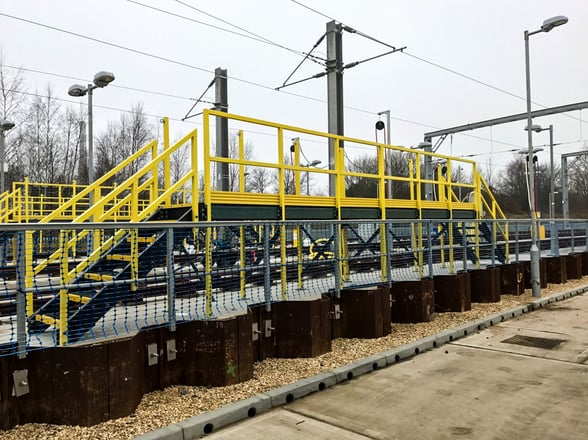
Fiber Reinforced Polymer (FRP) materials are increasingly being used as an attractive alternative for bridge decking and rail platforms. The value to the owner is a combination of corrosion resistance, long life, design flexibility, and fast installation. Since large panels help with fast installation, Composite Advantage uses the vacuum infusion manufacturing process to mold large, prefabricated panels.
As designers and owners are switching to FRP for decking and platforms, they are looking to improve ancillary structures like stairs and railing systems with longer-lasting alternatives. This is especially true for stairs systems that must withstand chemical deicing systems. Sometimes this calls for replacing steel and concrete with stainless steel. Just like FRP, there is a price premium for stainless steel. However, we are seeing progression in design plans to include more FRP stairs.
Stairs and railing systems are cost-effectively fabricated using constant cross-section profiles made using the pultrusion process. These profiles are assembled into the stairs and railing systems using stainless steel hardware. There is still a lot of design flexibility available in this configuration using different size profiles. This customization is crucial as almost every rail platform has different geometry constraints.
These Structural Fabrication systems are designed and fabricated by our sister company, Kenway Composites. For more information, see their recent discussion on these long-lasting structures.
